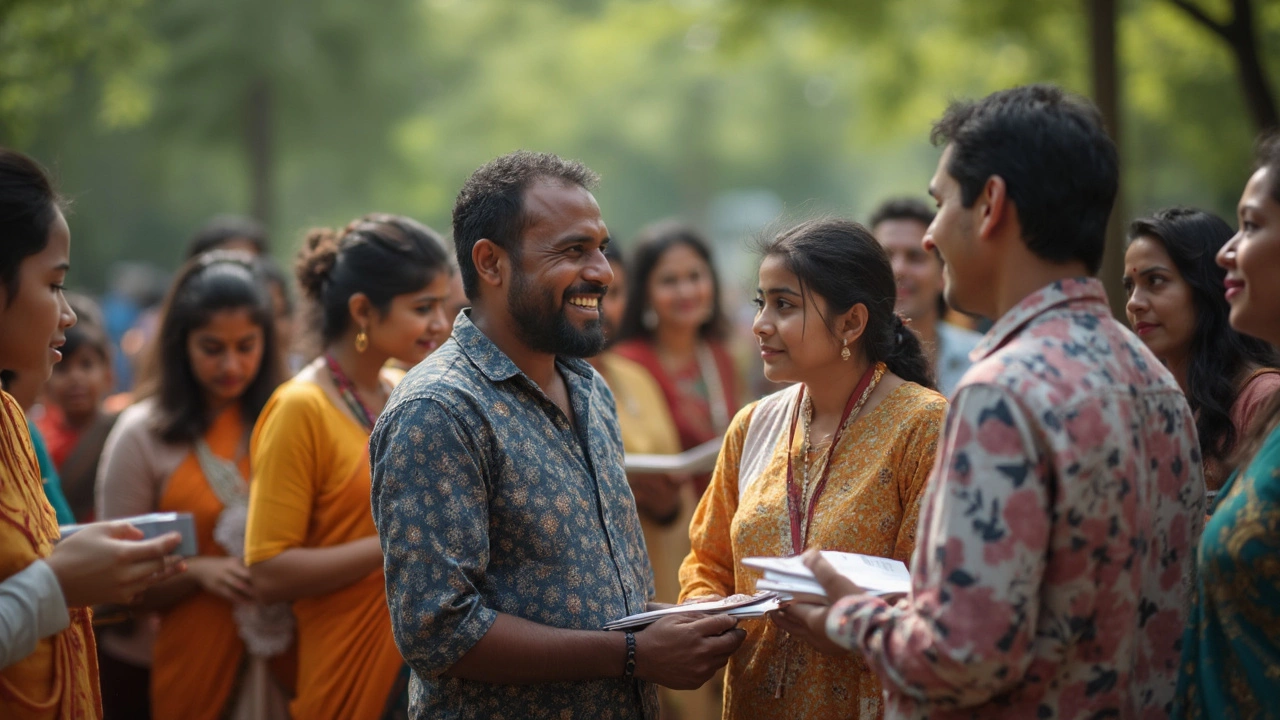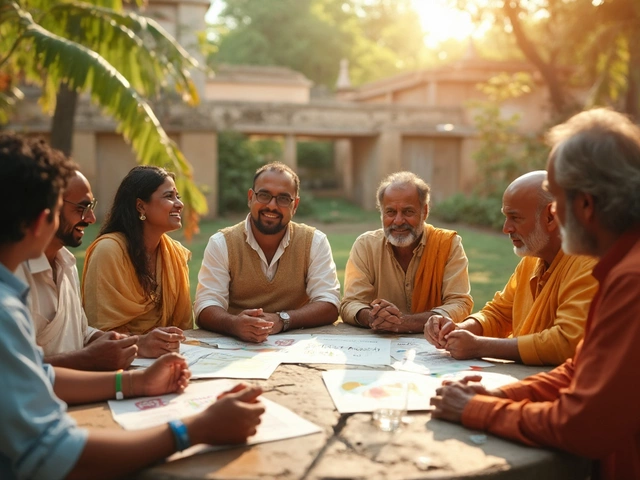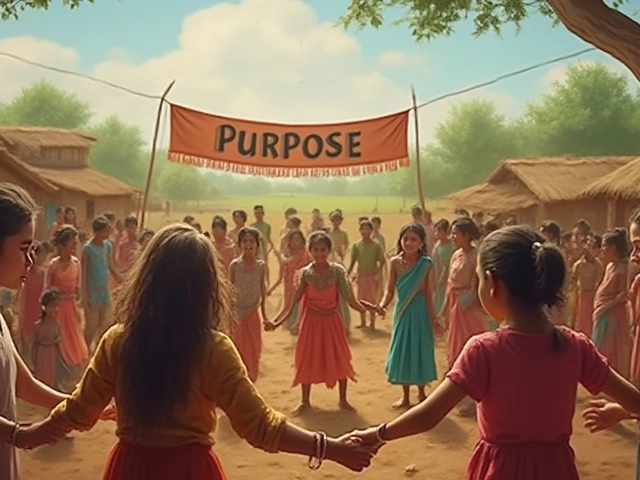Ever notice how some neighborhoods feel tightly connected, while others are a collection of strangers? That’s where community outreach steps in. The main goal isn’t about ticking boxes or just doing charity work; it’s about building real trust and actually listening to what people need.
Most outreach projects flop when they assume what a community wants instead of asking. People remember when you show up for a parade, but they remember even more when you help fix a broken streetlight or set up a free health clinic based on what they asked for. Outreach that works starts with genuine conversations and the willingness to follow through on promises.
- What Community Outreach Really Means
- Why Building Trust Comes First
- Tips for Making Outreach Work
- Measuring Real Impact
What Community Outreach Really Means
Community outreach isn’t just a buzzword or something to tack onto a company’s website. It’s an ongoing process that connects people, local groups, or organizations with the everyday folks living in a neighborhood. The core idea is to help solve real problems and make life better for everyone, not just a select few.
One big thing that separates strong outreach from empty gestures is clear communication. You can’t meet real needs if you don’t know what they are. Good outreach involves plenty of talking—and, even more importantly, listening. It’s about showing up in person, talking with residents at their favorite coffee shop, maybe hosting meet-ups at the library, or hanging around after church services. These face-to-face chats build trust in ways emails and flyers never can.
The community outreach approach should always be about more than just handing out information or gear. When it’s done well, it leaves people feeling like their voices matter. For example, a local survey in 2023 found that neighborhoods with regular outreach events—such as town hall meetings and volunteer drives—scored 25% higher on resident satisfaction compared to areas without organized outreach.
| Type of Outreach | Common Activities | Impact Rating (0-10) |
|---|---|---|
| Information Only | Mailers, posters, newsletters | 4 |
| Interactive | Workshops, open Q&A sessions, meet-and-greets | 8 |
| Resource-Based | Food drives, health clinics, tutoring | 9 |
So what’s the takeaway? If you’re trying to do good for your community, aim for approaches that invite questions, offer real help, and build relationships. That’s the kind of outreach people remember—and actually want more of.
Why Building Trust Comes First
If you want your community outreach to stick, you can’t skip trust. Without it, folks just see another outsider in a logo shirt making promises they probably won’t keep. Trust is the only thing that gets people to open up about what they really need. Once you have it, you’re not just some project manager—you become their go-to person.
Real trust doesn’t show up after a single meeting or a couple of group emails. It happens when you listen more than you talk, show up when you say you will, and admit if you mess something up. One study out of Stanford in 2022 showed that local outreach groups who spent more time listening at neighborhood events built stronger partnerships and saw nearly double the turnout at future events. Turns out, people love being heard.
If your goal is to make a real community outreach impact, you’ve got to show you’re invested long-term. Here’s how you can actually earn that trust:
- Show up consistently—don’t disappear after the first event.
- Get to know people by name, not just as "stakeholders" or "target audience."
- Follow through on the little things, like calling back when you said you would or fixing a problem you noticed yourself.
- Be open about what you can and can’t do—and keep people updated along the way.
No one likes feeling like a charity case or a checkbox on a grant application. Building trust means making people feel like partners, not projects. When you put trust first, your outreach has a real shot at creating change that actually matters to folks living there.

Tips for Making Outreach Work
You can’t wing it and hope for the best. If you want community outreach to actually make a difference, it needs a smart game plan. That means more than just scheduling an event and calling it a day. Here’s how you can make your outreach stick:
- Listen Before You Act: Hold open meetings and surveys to find out what the community really wants. For example, in a 2022 survey, 77% of project leads said feedback from locals changed their original outreach plan for the better.
- Show Up Consistently: One-off events rarely move the needle. Regular pop-ups or clinics build trust. People start to recognize your faces, and that goes a long way.
- Partner Up: Work with local businesses, schools, or faith groups. They know the area. In one neighborhood project, collaborations increased volunteer turnout by 40% according to the Community Impact Network.
- Keep Communication Simple: Ditch jargon. Use simple flyers, texts, or even WhatsApp groups. If people can’t quickly get your message, they tune out.
- Measure and Share Success: Don’t keep wins to yourself. Post results on social media or community boards so people see what’s changing.
Want some hard numbers? Here’s what typically moves the needle:
| Strategy | Average Increase in Participation |
|---|---|
| Monthly events instead of annual | +50% |
| Partnering with local leaders | +40% |
| Using clear, direct messaging | +25% |
| Sharing feedback/results | +30% |
None of this is flashy. But when you put these basics in place, your outreach won’t just look good on paper—it’ll actually work.
Measuring Real Impact
If you can’t prove your efforts are working, why keep doing them? Measuring impact doesn’t have to be complicated or left to the pros—it just takes the right questions and some consistency. First off, set a goal before launching any community outreach event. For example, if you aim to get more folks using the neighborhood library, count how many actually step through the doors after your campaign. Don’t guess; get the numbers.
One popular way to track impact is pre- and post-surveys. Before you start, ask folks—online or face-to-face—what they think about the issue you’re tackling. After your event or project, check again. Did opinions change? Did more people take action?
Collecting stories is just as powerful. Real feedback or success stories add context that numbers miss. Like when someone says, "Because of your after-school program, my kid made new friends and actually enjoys homework." That matters and can guide your next move.
- Keep your goals simple and specific. Instead of "improve health," try "get 25% more residents to the free clinic."
- Use attendance sheets or digital RSVPs for events. Even a sign-in clipboard does the trick.
- Don’t forget the follow-up. Three months later, reach out to see what stuck or what fizzled.
- Be transparent with your findings—even if things didn’t go as planned. People respect honesty.
Here’s a quick peek at real data from a local city’s 2024 outreach project:
| Activity | # Attended | Follow-Up Engagement (%) |
|---|---|---|
| Food drive | 130 | 60% |
| Neighborhood cleanup | 90 | 40% |
| Free health fair | 220 | 75% |
Notice almost three-fourths who went to the health fair stayed involved in later events. That’s the kind of thing you want to spot—what works and what needs a new approach. Tracking real impact isn’t about patting yourself on the back. It’s about learning, adjusting, and making every effort count for your community.





